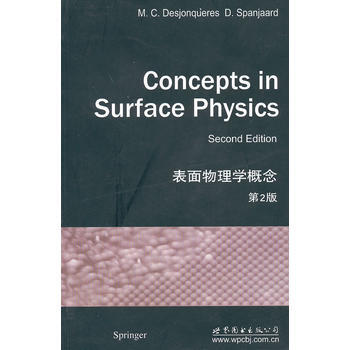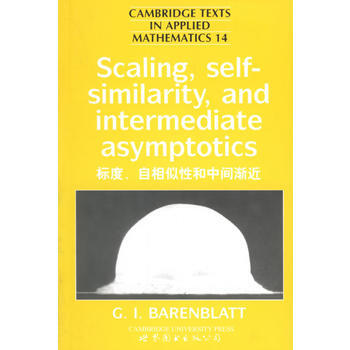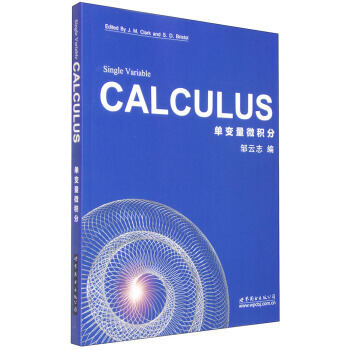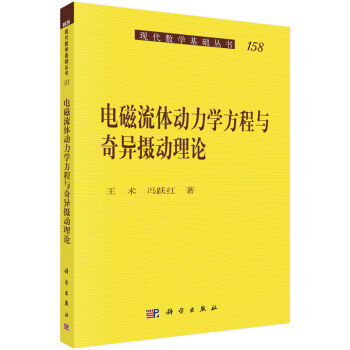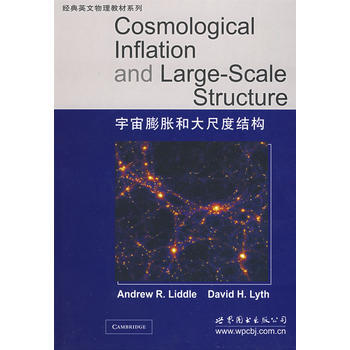

具体描述
基本信息
书名:宇宙膨胀和大尺度结构
定价:86.00元
售价:64.5元,便宜21.5元,折扣75
作者:(英)安德鲁(Andrew,R.L)
出版社:世界图书出版公司
出版日期:2009-01-01
ISBN:9787506292788
字数:
页码:
版次:1
装帧:平装
开本:16开
商品重量:0.740kg
编辑推荐
内容提要
The 1990s have seen substantial consolidation of theoretical cosmology, coupled with dramatic observational advances, including the emergence of an entirely new field of observational astronomy - the study of irregularities in the cosmic microwave background radiation. A key idea of modem cosmology is cosmological inflation, which is a possible theory for the origin of all structures in the Universe, including ourselves! The time is ripe for a new book describing this field of research.
目录
Frequently used symbols
Preface
1 INTRODUCTION
1.1 This book
1.2 The Universe we see
1.3 Overview: From cosmological inflation to large-scale structure
1.4 Notes on examples
2 THE HOT BIG BANG COSMOLOGY
2.1 The expanding Universe
2.2 Epochs
2.3 Scales
2.4 The cosmic microwave background
2.5 Ingredients for a model of the Universe
2.6 History of our Universe
Examples
3 INFLATION
3.1 Motivation for inflation
3.2 Inflation in the abstract
3.3 Scalar fields in cosmology
3.4 Slow-roll inflation
3.5 Exact solutions
3.6 Hamilton-Jacobi formulation of inflation
3.7 Inflationary attractor
3.8 Reheating: Recovering the Hot Big Bang
3.9 Thermal inflation
Examples
4 SIMPLEST MODEL FOR THE ORIGIN OF STRUCTURE I
4.1 Introduction
4.2 Sequence of events
4.3 Gaussian perturbations
4.4 Density perturbation: Newtonian treatment
4.5 The Baryon density contrast: Newtonian treatment
4.6 Cosmological perturbation theory
4.7 Evolution equations
4.8 Outside the horizon
4.9 Peculiar velocity in the relativistic domain
Examples
5 SIMPLEST MODEL FOR THE ORIGIN OF STRUCTURE II
5.1 From horizon entry to galaxy formation
5.2 The cosmic microwave background anisotropy
5.3 Polarization
5.4 Reionization
Examples
6 EXTENSIONS TO THE SIMPLEST MODEL
6.1 Modifying the cold dark matter hypothesis
6.2 ACDM model
6.3 Open CDM model
6.4 Fine tuning issues
6.5 Gravitational waves
6.6 Isocurvature perturbations
Examples
7 SCALAR FIELDS AND THE VACUUM FLUCTUATION
7.1 Classical scalar field
7.2 Quantized free scalar field in fiat space-time
7.3 Several scalar fields
7.4 Vacuum fluctuation of inflaton field
7.5 Spectrum of the primordial curvature perturbation
7.6 Beyond the slow-roll approximation
7.7 Gravitational waves
7.8 Generating an isocurvature perturbation
7.9 A multiponent inflaton
Examples
8 BUILDING AND TESTING MODELS OF INFLATION
8.1 Overview
8.2 Form of the scalar field potential
8.3 Single-field models
8.4 Hybrid inflation models
8.5 The spectral index as a discriminator
8.6 Models from extended theories of gravity
8.7 Open inflation models
Examples
9 THE COSMIC MICROWAVE BACKGROUND
9.1 Large angles and the cosmic background explorer (COBE) satellite
9.2 Degree-scale observations and acoustic oscillations
9.3 Aspects of microwave anisotropy satellites
Examples
10 GALAXY MOTIONS AND CLUSTERING
10.1 Clustering of galaxies
10.2 Galaxy velocities
Examples
11 THE QUASI-LINEAR REGIME
11.1 Gravitational collapse
11.2 Press-Schechter theory
11.3 Theory of peaks
11.4 Numerical simulations
11.5 Applications of Press-Schechter theory
11.6 Reionization of the Universe
Examples
12 PUTTING OBSERVATIONS TOGETHER
12.1 Observations
12.2 Critical-density models
12.3 Low-density models
12.4 Other options
12.5 Summary
13 OUTLOOK FOR THE FUTURE
14 ADVANCED TOPIC: COSMOLOGICAL PERTURBATION THEORY
14.1 Special relativity
14.2 Fluid flow in special relativity
14.3 Special relativity using generic coordinates
14.4 General relativity
14.5 Cosmological perturbations
14.6 Evolution of the perturbations
Examples
15 ADVANCED TOPIC: DIFFUSION AND FREESTREAMING
15.1 Matter
15.2 Gas dynamics in flat space-time
15.3 Gas dynamics in the perturbed Universe
15.4 Multipoles and the Boltzmann hierarchy
15.5 Polarization
15.6 Initial conditions and the u'ansfer functions
Examples
Appendix: Constants and parameters
Numerical solutions and hints for selected examples
References
Index
作者介绍
文摘
序言
用户评价
这本书的写作风格是那种非常克制而又充满力量的风格。它避免了过度的煽情,但其所描绘的宇宙图景本身就带着一种不可抗拒的史诗感。我尤其欣赏作者在分析‘霍金辐射’和‘信息悖论’时所展现出的严谨态度,虽然这部分内容似乎是‘跨界’的,但它有效地解释了我们目前对宇宙‘边缘’状态的理解。它告诉你,我们对‘膨胀’的认识,必须建立在对‘终极命运’的猜想之上。与其说这是一本物理书,不如说这是一部关于‘存在’的编年史。它让你体会到,我们所处的‘现在’,不过是这场宇宙大戏中一个极其短暂的、但又至关重要的‘快照’。阅读过程像是在攀登一座信息量巨大的山峰,虽然辛苦,但顶峰的视野绝对值得。
评分这本书的叙述节奏把握得极好,它没有一下子就把你推入那些复杂的数学模型里,而是采取了一种‘层层递进’的讲解方式。一开始,你只是跟着作者在‘想象’那些看不见的暗能量是如何推动星系加速远离的,那种‘被推着走’的无力感,让人深思。但最精彩的部分,是作者引入了‘重子声学振荡’的这个概念。我之前对这个词只是模糊的印象,但在这里,它被解释得如此清晰,仿佛作者亲自带你穿越回几十亿年前,去‘倾听’那些宇宙初期的声波留下的‘指纹’。这种将宏大理论与微小波动联系起来的写作技巧,非常高明。它让你明白,我们现在看到的星系分布图,其实是那个遥远年代‘声音’的回声。读完这部分,我甚至开始怀疑,我们所感知的‘空间’本身,是不是也带着某种‘频率’上的信息。
评分这本书,我拿起来的时候就觉得它的标题带着一股子宏大叙事的气息,但读进去之后,才发现它远不止于此。作者的笔触非常细腻,尤其是在描绘早期宇宙背景辐射的那些章节,简直就像一幅幅流动的水彩画。我本来以为会是一本枯燥的物理教材,但里面关于‘结构形成’的论述,却充满了哲学思辨的味道。它没有直接告诉你‘暗物质’到底是什么,而是通过解释观测到的星系团是如何在引力作用下‘凝聚’的,让你自己去体会那种宇宙尺度的‘聚合美学’。读到后面,你会发现,我们对宇宙的理解,其实就是对‘为什么现在是这个样子’的一种不断追问。那种从均匀到不均匀的转变过程,被写得非常富有戏剧性,仿佛宇宙本身就是一个巨大的、缓慢展开的史诗。我特别喜欢其中一个比喻,把宇宙网比作一张拉伸到极致的、有着各种孔洞的橡胶膜,每一个节点都是一个星系团的雏形,这个画面感极强。
评分这本书给我的最大感受是‘敬畏’。它不仅仅是关于‘东西’是怎么运动的,更是关于‘为什么’它们以这种方式组织起来。作者在探讨‘大尺度结构’的演化时,引入了大量的观测数据——那些星系红移巡天的结果,被描绘得如同星辰大海的‘族谱’。我尤其被‘星系团’的形成过程所震撼。想象一下,原本弥散在真空中的物质,是如何在引力的‘雕塑’下,耗费了上百亿年,才最终凝结成我们今天看到的那些庞大、引力束缚的‘岛屿’。这其中蕴含的‘时间’和‘物质’的尺度感,是任何科幻小说都无法比拟的。读完之后,我看待夜空的方式都变了,不再只是看到闪烁的光点,而是看到这些光点背后,那张无比复杂、仍在不断生长的‘宇宙网’的纤维。
评分对于一个非专业读者来说,这本书的深度是挑战,但同时也是乐趣所在。我必须承认,有些关于‘柳树定律’或是‘相场模型’的讨论,我需要反复阅读才能领会其精髓。但作者的魅力就在于,即使在最深奥的部分,他也总能找到一个接地气的类比。比如,当他解释‘宇宙微波背景’的各向异性时,他没有堆砌爱因斯坦方程,而是用了一个关于‘烘烤蛋糕’的例子,说明温度的微小差异如何决定了最终的‘结构’。这让我对‘尺度’的概念有了全新的认识——在宇宙尺度上,‘微小’的偏差往往决定了‘巨大’的未来。这本书的结构安排也很巧妙,它不像教科书那样死板,更像是一场由不同领域的专家引导的、跨学科的沙龙对话。
相关图书
本站所有内容均为互联网搜索引擎提供的公开搜索信息,本站不存储任何数据与内容,任何内容与数据均与本站无关,如有需要请联系相关搜索引擎包括但不限于百度,google,bing,sogou 等
© 2025 book.coffeedeals.club All Rights Reserved. 静流书站 版权所有


